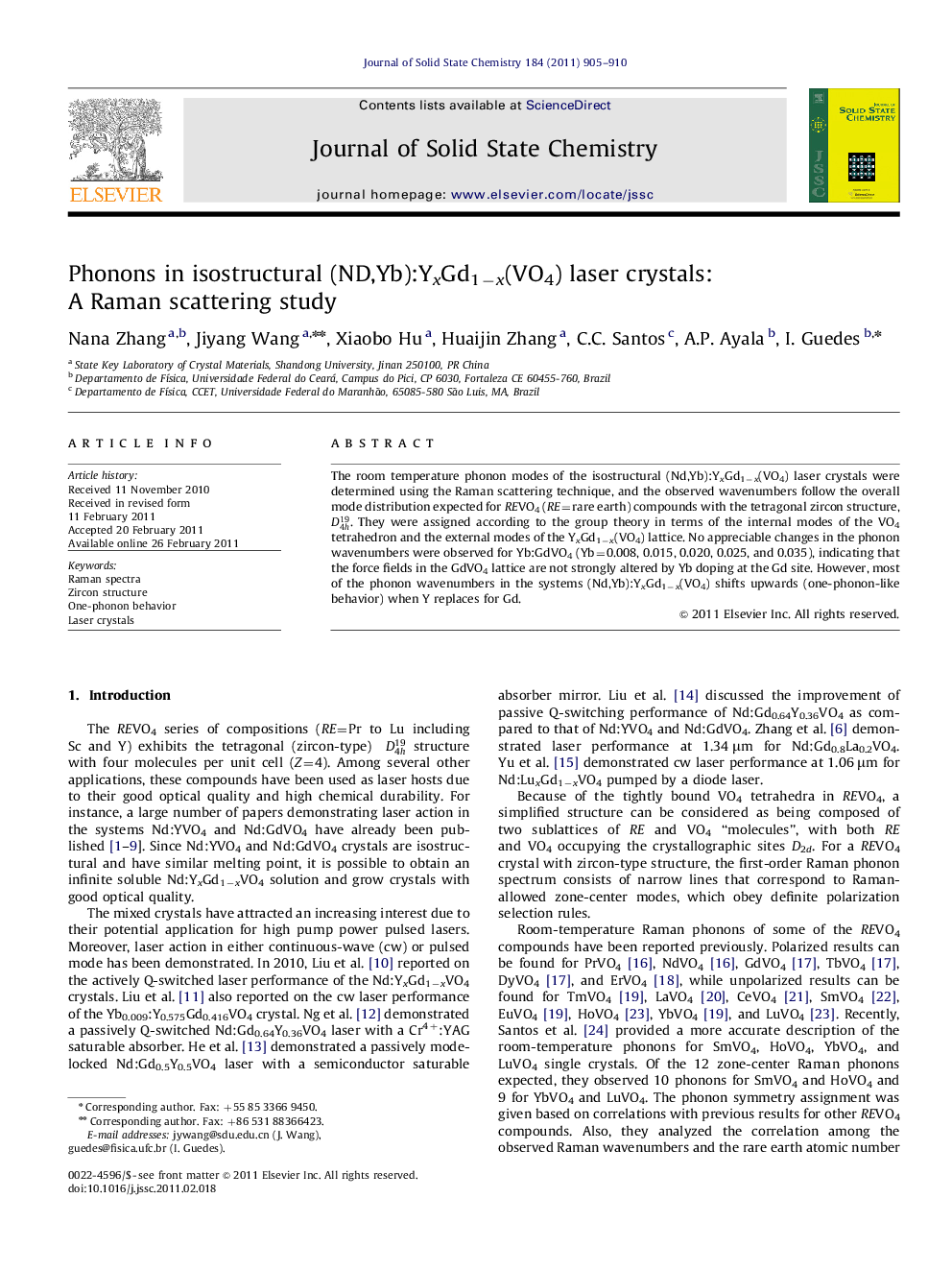| Article ID | Journal | Published Year | Pages | File Type |
|---|---|---|---|---|
| 1330924 | Journal of Solid State Chemistry | 2011 | 6 Pages |
The room temperature phonon modes of the isostructural (Nd,Yb):YxGd1−x(VO4) laser crystals were determined using the Raman scattering technique, and the observed wavenumbers follow the overall mode distribution expected for REVO4 (RE =rare earth) compounds with the tetragonal zircon structure, D4h19. They were assigned according to the group theory in terms of the internal modes of the VO4 tetrahedron and the external modes of the YxGd1−x(VO4) lattice. No appreciable changes in the phonon wavenumbers were observed for Yb:GdVO4 (Yb=0.008, 0.015, 0.020, 0.025, and 0.035), indicating that the force fields in the GdVO4 lattice are not strongly altered by Yb doping at the Gd site. However, most of the phonon wavenumbers in the systems (Nd,Yb):YxGd1−x(VO4) shifts upwards (one-phonon-like behavior) when Y replaces for Gd.
Graphical abstractPlot of the observed wavenumbers of Nd:YxGd1−x(VO4) versus Y content (x). The linear trend indicates that most of the observed wavenumbers exhibit a one-phonon-like behavior.Figure optionsDownload full-size imageDownload as PowerPoint slideResearch highlights► Force fields in the GdVO4 lattice are not strongly altered by Yb doping at the Gd site when the doping content of Yb is below 3.5 at%. ► Most of the phonon wavenumbers in the systems (Nd,Yb):YxGd1−x(VO4) shifts upwards with x increasing. ► The upward shifting is related to the decrease of the RE–O distance due to the lattice contraction. ► Most of the observed wavenumbers exhibits a one-phonon-like behavior.
